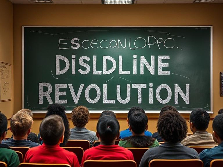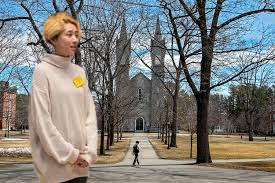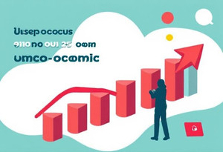
The Executive Shake-Up: How Presidential Orders Are Reshaping School Discipline in 2025**
Remember the days of “zero tolerance” echoing through school hallways? Detentions piling up, suspensions becoming almost routine, and a nagging feeling that maybe, just maybe, we were pushing some kids further away instead of pulling them in? Yeah, those days are undergoing a massive rethink. And sitting right at the center of this seismic shift? You guessed it: executive order school discipline actions. Buckle up, because the way schools handle behavior is getting a serious overhaul from the very top, and it impacts everyone.
As someone who’s spent nearly a decade knee-deep in education policy and its real-world impacts, I’ve watched this evolution closely. It’s messy, it’s complex, and it’s charged with emotion. But ignoring it isn’t an option. Whether you’re a parent worried about your child’s classroom environment, an educator grappling with new guidelines, or a taxpayer invested in our kids’ futures, understanding how presidential directives are steering the ship is crucial. This isn’t just bureaucratic noise; it’s about fairness, safety, and the fundamental question: What kind of schools do we want?
So, let’s ditch the jargon and unpack what this “executive order school discipline” push really means in 2025. We’ll explore the driving forces, what the latest directives actually say (beyond the headlines), the heated debates they spark, and what it genuinely looks like on the ground in schools trying to get it right.
Why Did the Feds Jump Into the Discipline Fray? (Hint: It Wasn’t Random)
Let’s rewind a bit. For decades, school discipline was largely considered a local affair. Principals and school boards called the shots. But a growing mountain of data started painting a disturbing picture that couldn’t be ignored. Federal agencies, particularly under the Obama administration (remember the 2014 Dear Colleague letter?), began shining a spotlight on glaring disparities. The stats were (and frankly, still are) stark: Black students, students with disabilities, and LGBTQ+ youth were being suspended, expelled, and referred to law enforcement at rates wildly disproportionate to their white peers, often for similar, subjective infractions like “defiance” or “disruption.”
This wasn’t just about hurt feelings. Study after study linked harsh, exclusionary discipline – suspensions and expulsions – to devastating outcomes: lower academic achievement, higher dropout rates, and a terrifyingly direct pipeline into the juvenile justice system (the infamous “school-to-prison pipeline”). Researchers at UCLA’s Civil Rights Project consistently found that even a single suspension significantly increased a student’s risk of dropping out. The societal cost? Immense. The human cost? Unacceptable.
The core argument driving federal intervention, solidified through executive order school discipline initiatives, became one of civil rights. The data strongly suggested that discriminatory practices, even if unintentional (implicit bias is a powerful force), were violating students’ rights to equal educational opportunities under laws like Title VI of the Civil Rights Act. It wasn’t about excusing bad behavior; it was about demanding fairness and recognizing that how we discipline kids fundamentally shapes their life trajectories. The message was clear: The status quo was failing too many kids, and it was a national concern demanding a national response.
The 2025 Landscape: Key Executive Actions Shaping Policy
Fast forward to today. While specific legislation on discipline remains elusive in Congress, the executive branch, particularly under President Biden, has wielded its power aggressively to keep this issue front and center. Let’s break down the most significant levers pulled:
-
Reinvigorated Federal Guidance & Enforcement: The Biden administration didn’t just restore Obama-era guidance; it amplified it. The Department of Education (ED) and the Department of Justice (DOJ) issued robust joint guidance in 2023, explicitly reaffirming that discriminatory discipline practices violate federal civil rights laws. Crucially, they’ve backed this up with teeth. The ED’s Office for Civil Rights (OCR) has significantly ramped up investigations into school districts with disproportionate discipline data. In 2024 alone, OCR resolved over 50 such cases, often resulting in mandated district-wide reforms like bias training, revised discipline codes, and data monitoring systems. It’s a clear signal: the feds are watching and willing to act.
-
Funding Tied to Equity: Money talks. The administration has strategically used federal grants to incentivize discipline reform. Programs like the “Supporting Fair and Safe School Environments” grants prioritize funding for districts proposing comprehensive plans to reduce disparities and implement evidence-based alternatives like restorative practices and Positive Behavioral Interventions and Supports (PBIS). The message? Want federal dollars? Show us your plan for equitable discipline. This carrot-and-stick approach (enforcement being the stick) is a defining feature of current executive order school discipline strategies.
-
Data Collection & Transparency Mandates: You can’t fix what you don’t measure. Recent executive actions have strengthened requirements for states and districts to collect and publicly report detailed discipline data broken down by race, ethnicity, gender, disability status, and English learner status. The ED now publishes this data in more user-friendly formats, making disparities harder to ignore. This transparency isn’t just for regulators; it empowers parents and communities to hold their local schools accountable. Knowing the numbers is step one towards changing them.
What’s Actually In These Discipline Directives? Beyond the Soundbites
Okay, so the President says “fix discipline disparities.” What does that translate to on paper? It’s less about micromanaging every classroom interaction and more about setting frameworks and expectations:
-
The Core Mandate: Non-Discrimination. This is the bedrock. Federal guidance unequivocally states that discipline policies and practices that result in unjustified, disproportionate negative impacts on students based on race, color, national origin, sex, or disability are illegal. Districts must proactively examine their data and practices to root out bias, intentional or not.
-
Promoting Alternatives to Exclusion: While not banning suspensions or expulsions outright (except for our youngest learners in some contexts), the thrust is clear: exhaust alternatives first. Federal documents heavily promote frameworks like:
-
Restorative Practices: Focusing on repairing harm, building relationships, and reintegrating students rather than just punishing. Think facilitated circles, mediation, and accountability agreements instead of automatic suspension for a fight.
-
Positive Behavioral Interventions and Supports (PBIS): A proactive approach that teaches, models, and reinforces positive behaviors school-wide, creating a more predictable and supportive environment that often prevents misbehavior before it starts.
-
Multi-Tiered Systems of Support (MTSS): Providing layered levels of academic AND behavioral support based on student needs, ensuring kids get help before minor issues escalate.
-
-
Limiting Exclusion for Minor Infractions: Explicit guidance urges schools to severely limit or eliminate the use of out-of-school suspensions and expulsions for non-violent, non-drug-related offenses – things like tardiness, dress code violations, or “disrespect.” The emphasis is on keeping kids in class whenever safely possible.
-
Addressing the Role of Law Enforcement: Recent guidance strongly discourages the routine presence of police (School Resource Officers – SROs) in disciplinary roles for minor misbehavior. It stresses clear agreements (MOUs) defining SRO roles, limiting their involvement to serious safety threats, and preventing the criminalization of typical adolescent behavior.
Comparing School Discipline Approaches
| Feature | Traditional Zero Tolerance | Restorative Practices | Positive Behavioral Interventions & Supports (PBIS) |
|---|---|---|---|
| Core Focus | Punishment, deterrence | Repairing harm, relationships | Teaching & reinforcing positive behavior |
| Response to Incident | Automatic, prescribed consequences | Dialogue, understanding impact | Data-driven, tiered interventions based on need |
| Goal | Compliance, removal | Accountability, restoration | Skill-building, prevention, positive climate |
| Student Role | Passive recipient of punishment | Active participant in resolution | Active learner of expected behaviors |
| Primary Tools | Suspensions, expulsions, citations | Circles, conferences, mediation | Clear expectations, rewards, targeted support plans |
| View of Misbehavior | Rule-breaking requiring sanction | Harm to relationships/community | Skill deficit or unmet need |
The Firestorm: Arguments For and Against the Executive Order Push
Let’s be real: this isn’t some kumbaya moment everyone agrees on. Executive order school discipline policies are lightning rods. Here’s the clash:
The Case FOR Strong Federal Action:
-
Civil Rights Imperative: Proponents argue the data proves systemic discrimination exists. Federal intervention is necessary to uphold constitutional and statutory rights for marginalized students who local policies have consistently failed.
-
Breaking the School-to-Prison Pipeline: Reducing unnecessary suspensions and expulsions is seen as critical to keeping kids connected to school and out of the justice system, improving long-term life outcomes.
-
Creating Safer, More Supportive Climates: Advocates believe restorative practices and PBIS foster stronger relationships, better communication, and actually address the root causes of misbehavior, leading to genuinely safer environments in the long run, not just the illusion of order through removal. Organizations like the Advancement Project emphasize the mental health benefits of supportive over punitive approaches.
-
Promoting Educational Equity: Keeping kids in class means they keep learning. Reducing disparate exclusion is fundamental to closing achievement gaps.
The Concerns and Criticisms:
-
Federal Overreach: Opponents, including many local school boards and some state officials, argue discipline is inherently local. They see federal mandates and OCR investigations as intrusive, one-size-fits-all solutions that ignore unique community contexts and challenges. The Heritage Foundation and similar groups frequently frame this as federal coercion.
-
Undermining School Safety & Order: The most visceral criticism is that limiting suspensions “ties educators’ hands,” making classrooms less safe and allowing disruptive behavior to go unchecked, harming other students’ learning. Headlines screaming “Chaos in Classrooms!” often stem from this fear, though research linking reform to increased violence is mixed and often context-dependent.
-
Implementation Nightmares: Critics point to real struggles: underfunded mandates, lack of adequate training for teachers in complex restorative practices, insufficient mental health support staff, and the sheer difficulty of cultural change within large districts. They argue the feds dictate the “what” without adequately supporting the “how.”
-
Potential for Backlash & Resentment: Some educators and parents worry that a focus only on disparity reduction could lead to under-disciplining certain students out of fear of triggering federal scrutiny, creating resentment and perceptions of unfairness.
Real Talk: What Does This Look Like in Actual Schools? (Case Studies)
Theory is great, but let’s hit the pavement. How is this executive order school discipline push playing out in real classrooms? It’s a mixed bag, heavily dependent on local commitment and resources:
-
Oakland Unified School District (CA): A Restorative Journey (Ongoing): Oakland made national headlines years ago for embracing restorative justice district-wide, partly driven by federal pressure over extreme disparities. Results? Significant reductions in suspension rates overall and for Black students specifically. Test scores and graduation rates have shown improvement. But, it’s been a long, resource-intensive slog. Success hinges on deep, ongoing staff training, dedicated coordinators, and community buy-in. Teachers report it’s powerful when done well but requires immense time and skill – challenges persist in consistent implementation across all schools.
-
Suburban Midwest District (Under OCR Agreement): After an OCR investigation found stark racial disparities in suspensions for “defiance,” this district entered a resolution agreement. They had to:
-
Revise their discipline code to define “defiance” more objectively.
-
Implement mandatory implicit bias training for all staff.
-
Hire additional counselors and social workers.
-
Launch a PBIS program.
-
Report detailed data quarterly to OCR.
Early reports show suspension rates dropping, especially for subjective offenses. However, teachers report feeling overwhelmed by new protocols and paperwork. The district is grappling with the cost of new hires and training. It’s progress, but strained and under scrutiny.
-
-
Rural Southern District (Resisting Change): In districts with strong local opposition to “federal meddling,” changes have been minimal or superficial. Suspensions remain high, disparities persist. Teachers may have sat through a one-off “restorative practices” seminar but lack support to implement it. The main response has been frustration and a perception that discipline has become more difficult without tangible alternatives being properly resourced. This highlights the limits of federal power without local will.
Navigating the Road Ahead: Challenges and Future of Executive Action
The path forward for executive order school discipline is anything but smooth. Here are the major hurdles and what might come next:
-
The Funding Chasm: Implementing PBIS, restorative practices, and MTSS effectively requires significant, sustained investment: training coaches, hiring counselors and social workers, reducing caseloads, and buying curricula. Many districts, especially under-resourced ones, simply don’t have the funds, and federal grants only cover a fraction. Unfunded mandates breed resentment and failure. This is arguably the biggest barrier to success.
-
Teacher Training & Support: Throwing complex new approaches like restorative justice at teachers without deep, ongoing training and coaching is a recipe for disaster. Teachers need time, practical tools, and emotional support to shift from purely punitive models. Current professional development often falls woefully short.
-
Political Pendulum Swings: As we know all too well, federal priorities change dramatically between administrations. The aggressive stance of the current ED could easily be rolled back by a future president less focused on equity in discipline. This uncertainty makes long-term planning difficult for districts.
-
Beyond Behavior: Addressing Root Causes: Discipline reform alone can’t solve everything. Poverty, trauma, under-resourced communities, and lack of access to mental health care are fundamental drivers of challenging behaviors. Effective discipline reform must be coupled with broader investments in wraparound services – something largely beyond the scope of an executive order school discipline directive but critical to its ultimate success.
Looking ahead, expect continued legal battles, intense lobbying from various stakeholders, and a relentless focus on data. The ED will likely keep refining its guidance based on implementation challenges and new research. Districts under OCR agreements will be closely watched as test cases. The core tension – federal mandate vs. local control, equity vs. perceptions of order – will persist.
Wrapping It Up: More Than Just Rules, It’s About Rethinking Relationships
So, where does this leave us? The era of unfettered local control over school discipline, particularly practices with demonstrably discriminatory outcomes, is fading. Executive order school discipline actions, from aggressive OCR enforcement to targeted funding, are powerful tools pushing the system towards greater equity. This isn’t about being “soft” on misbehavior; it’s about being smart and fair.
The evidence is compelling: kicking kids out for minor issues doesn’t make schools safer or better; it often makes things worse, especially for marginalized students. Alternatives like restorative practices and PBIS, when implemented with fidelity and adequate support, offer a path to safer, more inclusive, and more effective school communities. They focus on building relationships, teaching skills, and addressing harm constructively – skills valuable far beyond the school walls.
Is it easy? Absolutely not. The challenges of funding, training, cultural shift, and addressing deep societal issues are immense. There are legitimate concerns about implementation and unintended consequences. But the fundamental goal – ensuring every child, regardless of race, disability, or background, has a fair shot at a quality education in a safe and supportive environment – is non-negotiable.
The executive order school discipline push is a catalyst, forcing a necessary, if uncomfortable, national conversation. The real work happens in every school, every classroom, every interaction. It requires commitment, resources, and a willingness to move beyond “we’ve always done it this way.” The stakes – our children’s futures and the health of our communities – couldn’t be higher. Let’s get this right.
FAQs: Your Burning Questions on Executive Orders & School Discipline
-
“Okay, so does this mean my kid’s principal can’t suspend anyone anymore?”
Nope, not at all! The focus is on reducing unnecessary suspensions, especially for minor stuff like talking back or dress code slips, and making sure suspensions aren’t unfairly hitting one group of kids way harder. Suspensions are still on the table for serious safety threats (like violence or drugs). The push is to try other things first and make sure the punishment fits the actual offense fairly.
-
“I keep hearing ‘restorative practices.’ What does that actually look like in real life?”
Instead of just giving detention or suspension for, say, a fight, restorative practices might involve a trained facilitator bringing the students involved together (and maybe affected peers/teachers) in a “circle.” They talk about what happened, how it impacted everyone, and what the person who caused harm can do to make it right. It’s about understanding consequences and fixing relationships, not just isolating the kid. It takes skill and time to do well, though!
-
“Do these orders tie teachers’ hands? How are they supposed to manage a chaotic classroom now?”
This is a huge concern and a real challenge. The goal isn’t to leave teachers powerless! It’s supposed to be about replacing purely punitive methods with better tools: like school-wide positive behavior systems (PBIS) that teach expectations upfront, better training to understand why kids act out (trauma, unmet needs), and access to counselors or social workers to help struggling students before things blow up. But critics argue many teachers aren’t getting enough training or support to use these new tools effectively, leaving them feeling stuck. It’s a major implementation gap.
-
“Is this just a political thing? Will it change again after the next election?”
Unfortunately, yes, that’s a real risk. Executive orders and agency guidance aren’t permanent laws. They depend heavily on who’s in the White House and running agencies like the Department of Education. The current administration is very active on this front, but priorities could definitely shift after 2024, potentially scaling back enforcement or changing the guidance. That uncertainty is tough for schools trying to plan long-term.
-
“What can I do as a parent if I’m worried about discipline in my kid’s school?”
Get informed and get involved! Ask your school or district for their discipline data (broken down by race, disability, etc. – they should have it). What’s their suspension rate? Are disparities present? Ask how they are implementing alternatives like PBIS or restorative practices. What training do staff have? Is there adequate mental health support? Attend school board meetings, join parent committees focused on school climate, and voice your support (or concerns) based on what you see happening. Your voice matters!





